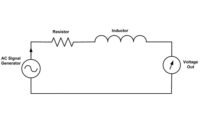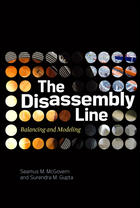
A major automotive component manufacturer wanted to validate the heat treatment of specific locations in its line of water pump shafts. These areas required specific hardness in wear areas, but a softer material in other areas was needed in order to maintain the strength of the shaft. The manufacturer wanted to inspect 100% of their parts. Source: Criterion NDT
On January 17, 2011, General Motors announced that it was recalling more than 26,000 vehicles due to a defective axle cross pin. The models affected included Cadillac, Chevrolet Colorado, Silverado, Tahoe and Yukon. These vehicles were built with rear axle cross pins that may not have been heat treated, and as a result, could fracture and/or move out of position. If this were to happen, the rear axle could lock up while driving and potentially cause an accident.
This example highlights the impact that a relatively inexpensive, improperly manufactured, yet safety critical component can have on an automobile, aircraft or medical device. Due to the nature of today’s global supply chain, it is critical that subassembly manufacturers and end vehicle manufacturers have confidence in the components they procure. As heat treat process variations are not easy to detect visually, it is often something that is assumed to have been done correctly when evaluations are performed by production sampling of parts.

This eddy current probe and system is designed to test the proper heat treat of a valve seat, which has a long pin on the probe designed to fit inside the value guide, thereby ensuring proper alignment of the eddy current probe and area under test. Source: Criterion NDT
Eddy Current Heat Treat Validation
Eddy current is a mature, nondestructive testing technique that is used to validate the correct material structure of a conductive component. Material structure validation looks for variations in heat treat conditions, alloy compositions and defects in the material such as crack and flaws.Modern eddy current test systems can validate the heat treat conditions of components very quickly, which allows it to keep up with production line speeds. This makes it an effective test for validating 100% of the manufactured components. This is more effective than only using sample testing, which is done after the production parts have been manufactured.
How Eddy Current Heat Treat Validation Works
Eddy current is an electromagnetic test that looks at how electrical currents flow in a metallic structure or component. These currents will flow differently in metals that have differing material structures. Heat treating changes a component’s material structure, which is why eddy current is an effective heat treat test method. Eddy current testing results have shown an excellent correlation with impact testing, such as Rockwell testing.Unlike traditional impact hardness testing, eddy current testing is a comparative test, which compares a known good part vs. a part under test and is evaluating a section of the part rather than a specific point on the material.
Eddy current instruments generate either a single frequency or multifrequency electrical signal that is sent to an eddy current coil or set of coils. These coils generate an electromagnetic field, which causes eddy currents to flow in the conductive material under test. These eddy currents will flow differently depending on the materials hardness, alloy or existing flaws. The same coils sense the changes in the secondary magnetic field being generated by these eddy currents and these changes are sent back to the eddy current instrument where it is analyzed and compared to a known good material condition.

This eddy current testing fixture contains three independent eddy current encircling coils, which provided the ability to test in three specific areas. A half round piece of black nylon on the side was the tooling used to establish the eddy current coil spacing for each pump shaft part number. A titanium center tube provided a guide for the parts preventing wear on the eddy current coils, while having minimal impact on the testing due to its’ low conductivity. Source: Criterion NDT
Case Study: Eddy Current Water Pump Shaft Testing
A major automotive component manufacturer wanted to validate the heat treatment of specific locations in its line of water pump shafts. These areas required specific hardness in wear areas, but a softer material in other areas in order to maintain the strength of the shaft. The manufacturer wanted to inspect 100% of their parts.The solution for the automotive manufacturer was to install an eddy current testing station that would be able to test not only multiple diameters, but also multiple lengths of water pump shafts. The eddy current testing fixture developed for this application contained three independent eddy current encircling coils, which provided the ability to test in three specific areas. A half round piece of black nylon on the side was the “tooling” used to establish the eddy current coil spacing for each pump shaft part number. A titanium center tube provided a guide for the parts preventing wear on the eddy current coils, while having minimal impact on the testing due to its’ low conductivity.
As eddy current testing is a relative test, a second set of eddy current coils with a known good shaft was used as an external reference. For this application, the master setup parameters for each of the parts were saved as a unique configuration in the eddy current instrument for comparison.
To properly test for heat treatment in three areas at once, the testing had to be accomplished in static mode requiring that the part be momentarily held in the test fixture. The sorting mechanism was built to handle the multiple lengths and diameter of parts. Heat treated water pump shafts would enter the top of the fixture and be metered into the top of the eddy current coil fixture. They would be stopped for approximately 1 second. If the part was accepted, it would be released and automatically go into a good parts bin. Reject parts would go into a reject bin. Testing rates were approximately 40 parts per minute. If multiple rejects were discovered to occur in a row, the eddy current instrument was capable of raising an alarm, notifying plant operators that there could be an upstream process issue.
The eddy current testing solution allowed the automotive component manufacturer to inspect 100% of its water pump shafts in very specific locations, at production line rates. This not only ensured top quality of the products they delivered, but also identified when heat treat processes were not working correctly, allowing them to quickly fix the problem and reduce scrap and warranty costs. One--hundred percent testing using traditional indentation methods would not have been possible. As the test fixture was capable of testing numerous diameters and lengths of shafts, the manufacturer was able to save on testing costs and shop floor space.
Heat Treat Testing of Internal Features
Eddy current testing is not limited to heat treat validation of external features or small components. In many cases, key heat treat areas are located in very complex components in very specific areas. This often requires the use of a custom manufactured eddy current probe, which may contain numerous coil windings. These probes often are manufactured with stainless steel housings to resist wear and are designed to work with on-line material handling systems. One example of this is an eddy current probe and system designed to test the proper heat treat of a valve seat. The long pin on the probe was designed to fit inside the value guide ensuring proper alignment of the eddy current probe and area under test.Eddy current testing offers manufacturers a way to validate the heat treat processes that are performed on a component. These tests offer consistent results that are well correlated with destructive testing methods and indentation methods, such as Rockwell testing. Modern eddy current instruments are easily integrated with material handling systems providing a method to automatically reject bad components at production line rates. In addition, this information provides real-time information to line operators letting them know if a manufacturing problem exists.NDT

